Diagrams & Destiny - Cislunar and Solar Spacepower
How do Cislunar and Solar space operations fit into multi-domain operations? What about national power? Read and find out!
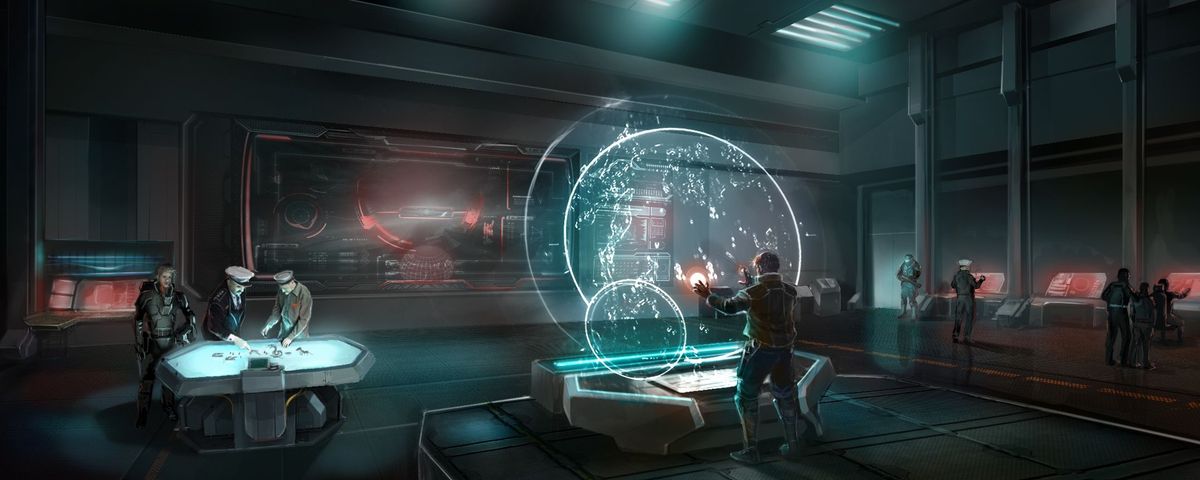
How are terrestrial domains (air, sea, land) connected with space? How do they interact? What does the nature of these connections mean for the conceptualization, comprehension, planning, and execution of national spacepower? What does it mean about the future?
LtCol Mantz 'High Ground' approach to spacepower theory is supported by a well-defined state transition diagram that enables conceptualization, planning, and execution of multi-domain operations (MDO) involving the space domain. This article expands Mantz' original diagram to include cislunar and solar interactions consistent with astrodynamics. MDO and all instruments of national power - economic, diplomatic, information, and military - benefit from this updated model, and planners and decision-makers would benefit from internalizing its relationships.
To unravel this yarn we will 1) review the High Ground school of spacepower theory and how a state transition diagram helps the exercise of power, 2) what modifications we should make to the diagram to account for current cislunar and solar spacepower needs, and 3) discuss implications for multi-domain operations (MDO) and integrated multi-domain usage of instruments of national power.
Tallyho!
1) The New Sword and Military Spacepower
To understand LtCol Mantz' diagram and context we need to introduce national spacepower, military spacepower, and the High Ground school of spacepower theory.
National Spacepower and Military Spacepower
What is national spacepower and military spacepower?
Some relevant excerpts are below.
"National Spacepower is the sum of all resources and capabilities a nation possesses to influence and control events, outcomes, and other actors in the Space Domain in pursuit of prosperity and security." (What is Spacepower and Why You Should Care!)
Military spacepower is described elsewhere, thought a concise description is below:
"Fundamentally, the military instrument is coercive in nature, to include the integral aspect of military capability that opposes external coercion." (pg. I-13, U.S. DoD Joint Publication 1 (JP-1))
For details I refer the reader to a different article that describes national spacepower and its uses in national military, economic, information, and diplomatic instruments of power.
With the basics of those high-level definitions set down, let's look at the High Ground school of spacepower theory.
High Ground Thinking
In 1995 the Air University Press published The New Sword: A Theory of Space Combat Power by LtCol Mantz. It has since become an excellent example of the High Ground school of spacepower theory.
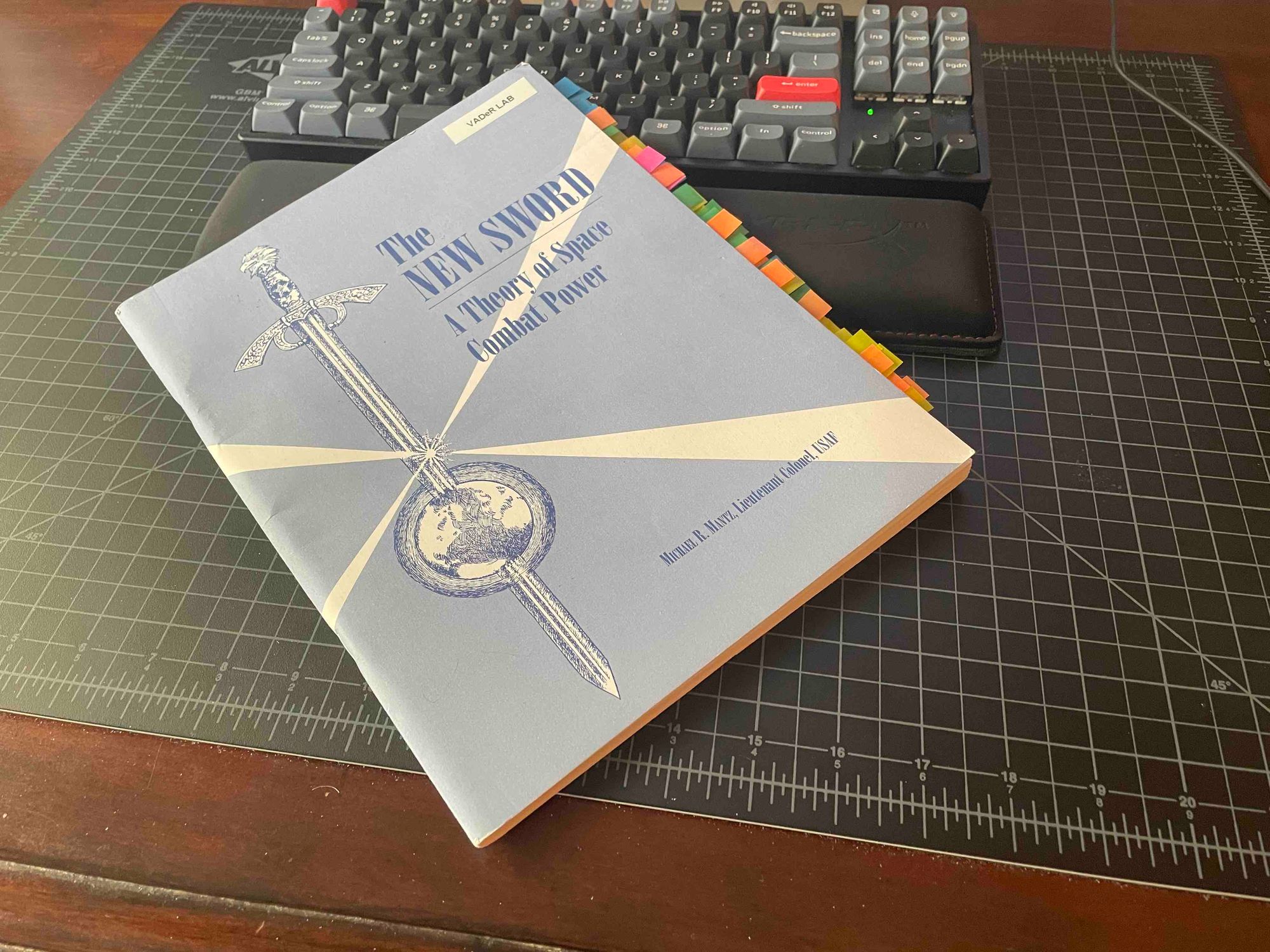
The High Ground school's position is that space denial, space protection, and space strike elements of military spacepower should all be pursued. It is also commonly associated with ballistic missile defense (BMS) systems (or more famously, the Strategic Defense Initiative). Pursuit of High Ground spacepower theory (vice 'Sanctuary' or 'Space Control' schools) has substantial implications on national security and nuclear deterrence.
I'll refer the interested reader to another article for a summary of all schools of spacepower theory and their connections with nuclear deterrence.
Mantz identifies three principal uses for military spacepower - Space Denial, Space Strike, and Space Protection. In his text, he then develops a model of which regions or domains are adjacent to one another to facilitate an analysis of how space denial, strike, and protection could potentially be used.
I'm not going to get into those details - that's an article for another time, perhaps. Rather, I'm going to focus on the adjacency model proposed by Mantz and how we might expand upon it for today's (and tomorrow's!) operational realities.
Mantz' Model Using State Transitions
While developing his spacepower theory, a core element of his work includes objective relationships between different regions of Earth, the moon, and space.
"The question, From where to where? captures the essence of military operations including space operations. Regardless of the purpose of an operation, its beginning and ending locations have tremendous impact on the nature of the operation and its success." (pg. 31, The New Sword: A Theory of Space Combat Power)
In his text, LtCol Mantz proposes using state transition diagrams to visualize questions related to from where to where? He develops several models, finally developing the diagram below.
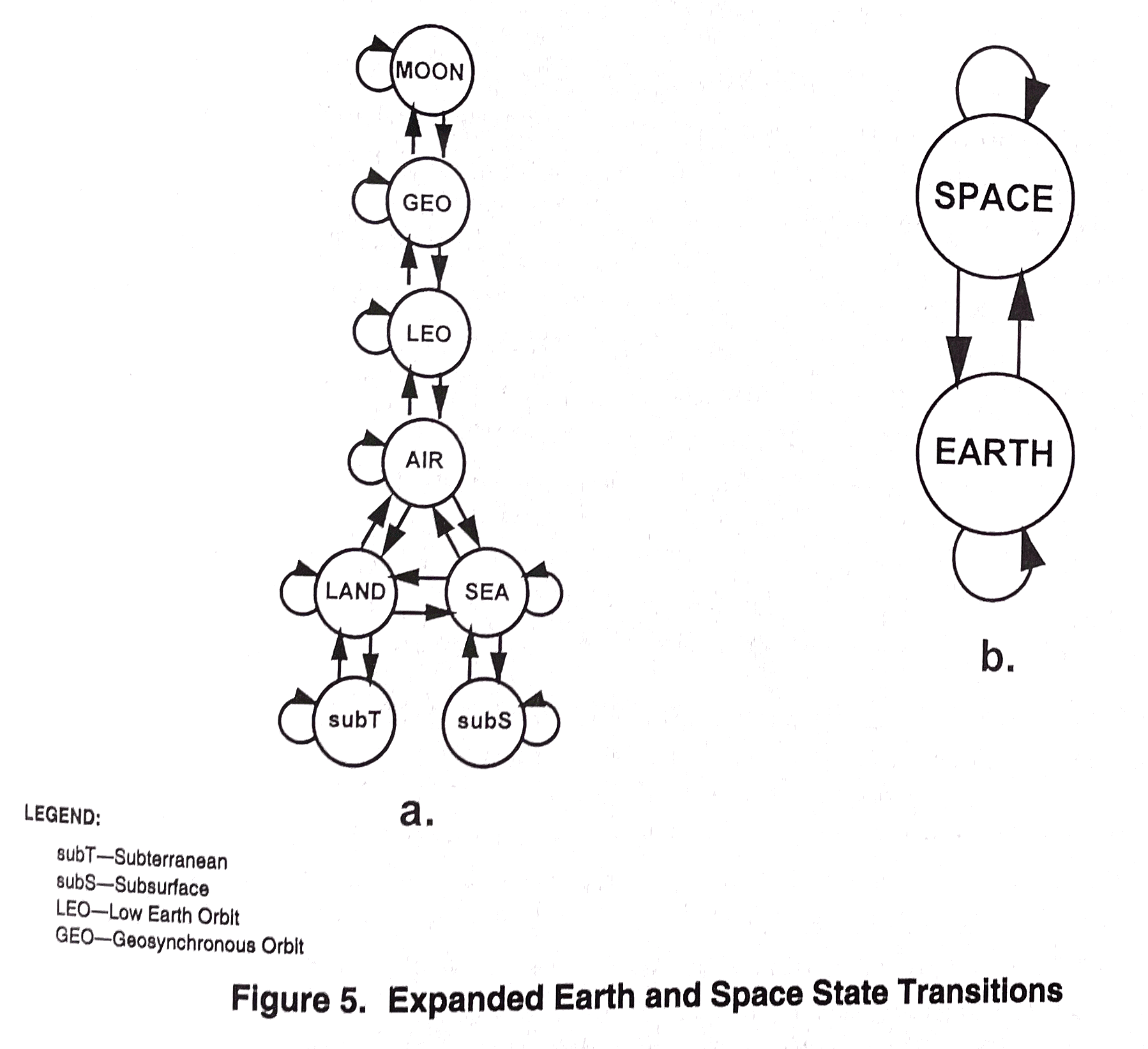
Circles are 'nodes,' i.e., physical regions. Arrows (called 'edges' in graph theory) tell us which regions are connected / adjacent. There is some implicit measure of time associated with traveling along these arrows - whether the speed of light for radio signals and photons or more mundane travel. In all cases the arrows tell us how one might traverse from place to place. All of these regions have arrows pointing at themselves. This captures the fact that an object can always stay within the same region over time.
The nodes 'subT' and 'subS' are 'subterranean' and 'subsurface,' respectively (subsurface being below the surface of the ocean). The nodes 'LEO' and 'GEO' should be thought of as concentric shells around Earth. While Mantz is focused on military spacepower, these relationships hold for any physical activity in the cislunar domain.
One common question is "Ground assets can directly affect LEO spacecraft. Why isn't there a direct arrow connecting the two?" The answer is that the method employed by the ground asset must still traverse the AIR domain - whether it is composed of RF signals, photons, or aluminium. Hence, effects from ground assets must begin on LAND, traverse through AIR, and on to LEO (or further).
Mantz' model is fertile ground for several questions:
- Are there any updates we should make? It's been 30 years since the model was published. Space operations has expanded. Does it still hold?
- From where to where? and to what end? Said differently, does this simplified model generate insight into cislunar or solar spacepower?
I'll answer the first question in the following section.
2) A Modified Transition Diagram
What updates should we include in Mantz' state transition diagram? In this section I'm striving for balance between simplicity and detail. As Einstein once said, 'make a model as simple as possible, but no simpler.'
I'll begin by taking Mantz' original diagram and turning it on its side, making room for more additions.
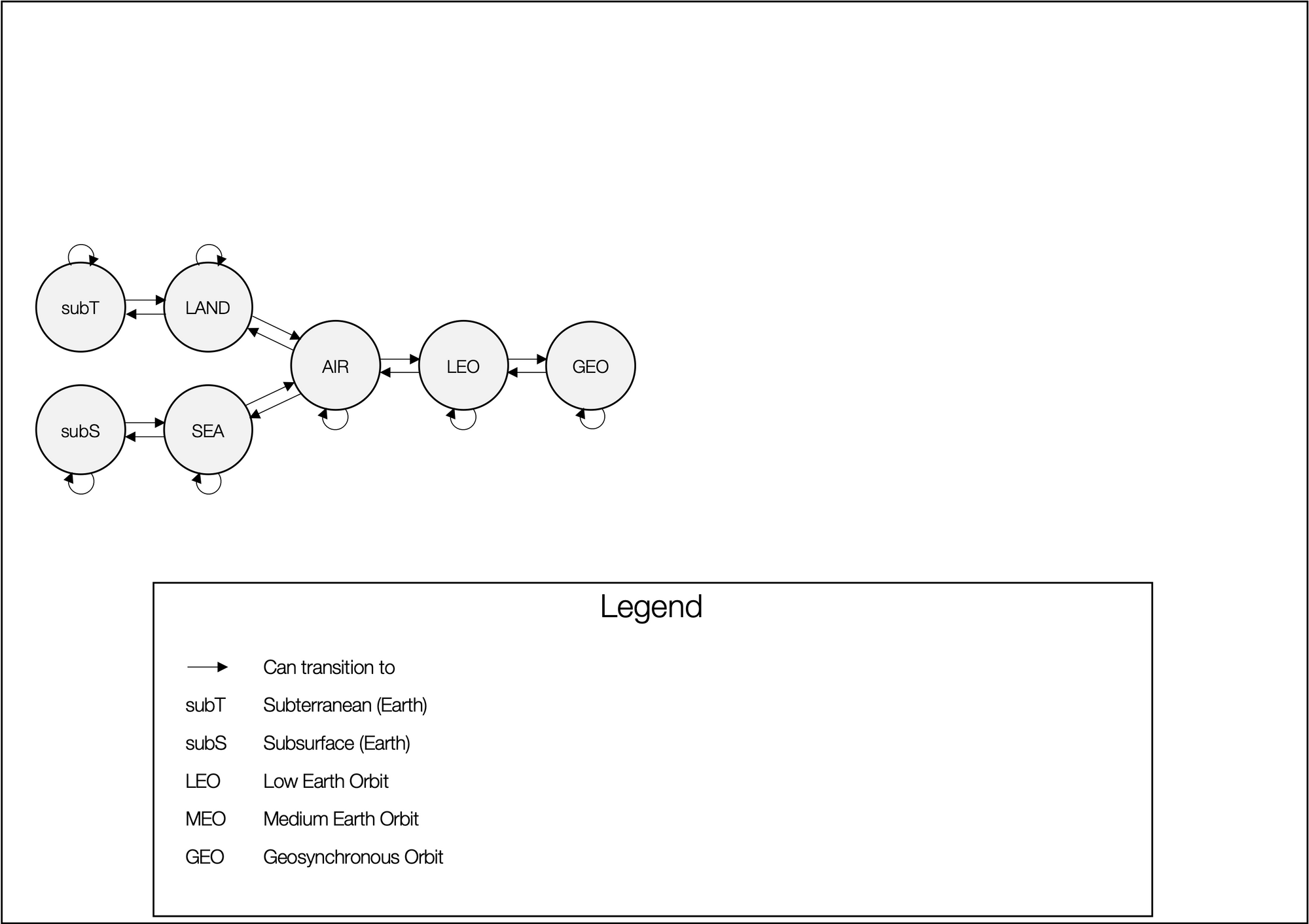
Let us turn our attention to the moon.
Luna
In the original diagram the moon is simplified to a generic region. What detail should we expand upon? Astrodynamicist will all have their own opinions. I kept this diagram relatively consistent with the notional division of regions in A Primer on Cislunar Space.
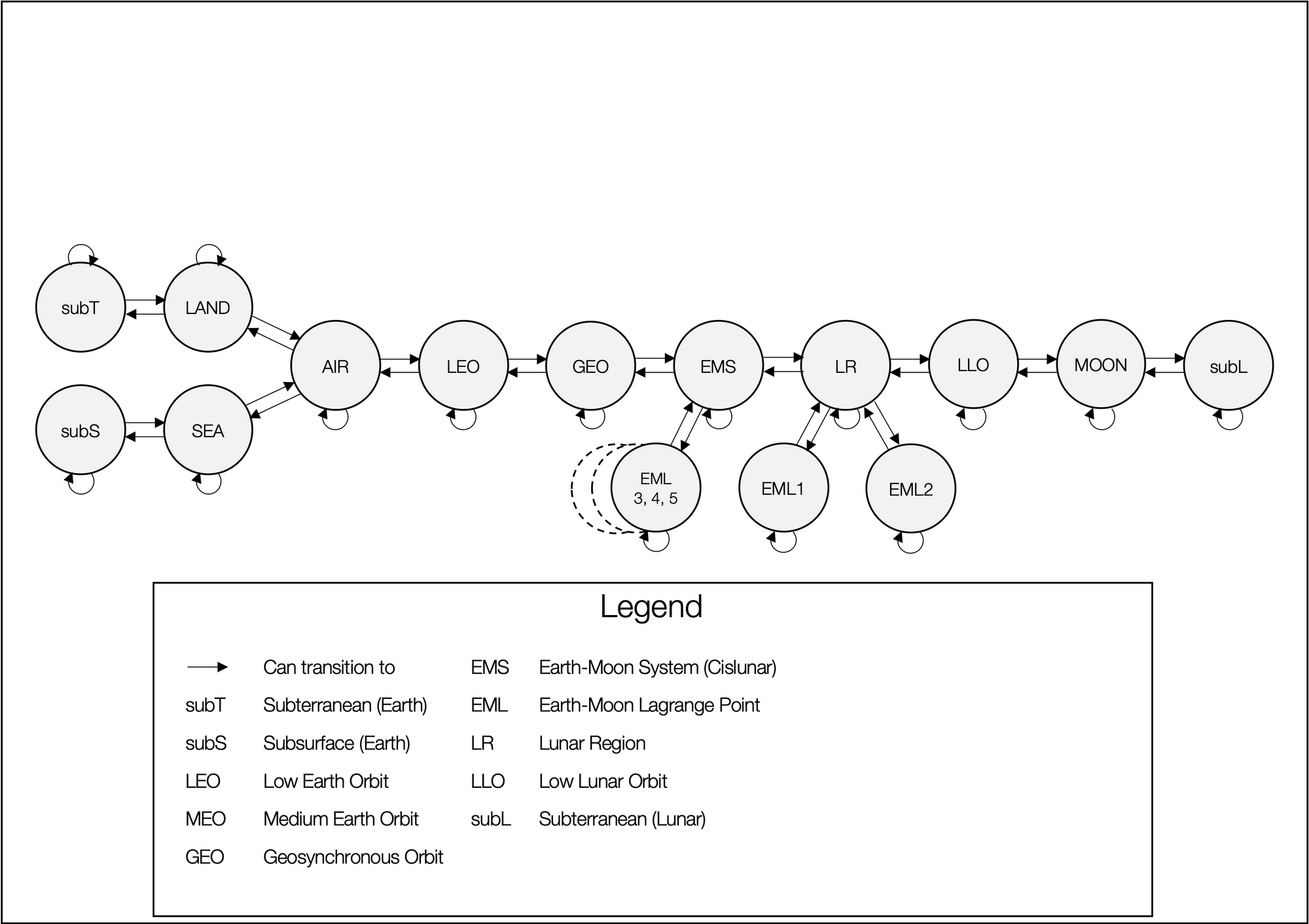
Not far beyond the GEO radius (again, it should be viewed as a concentric shell about Earth), we enter a realm significantly affected by both Earth and Lunar gravity called the Earth-Moon System (EMS). Below, see a figure from A Primer on Cislunar Space to help visualize the actual physical locations.
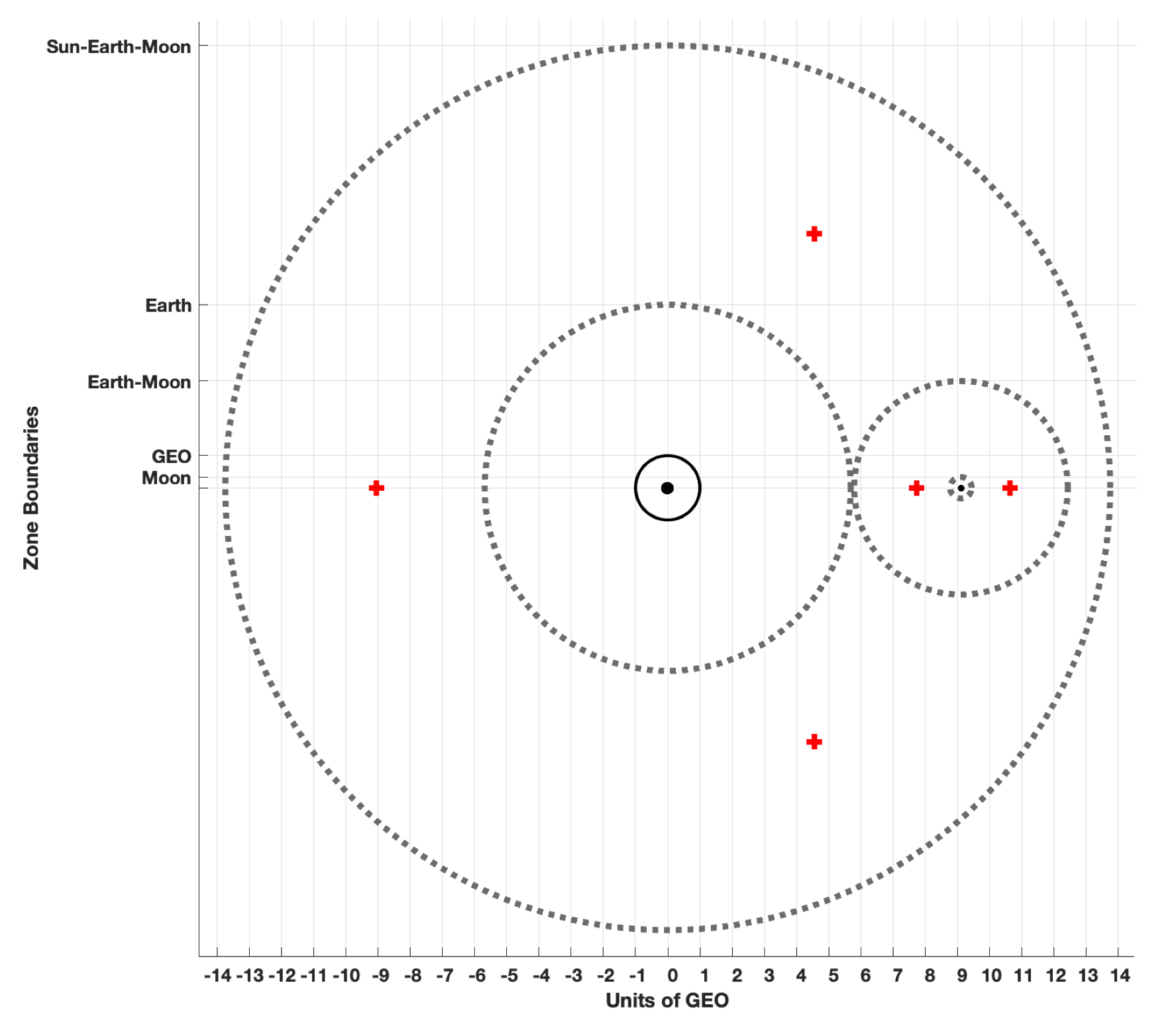
This space includes Earth-Moon Lagrange Points (EML) 3, 4, and 5. As we approach the moon further we enter a region about the moon (Lunar Region - LR) that encompasses the moon and includes the Earth-Moon Lagrange Points 1 and 2.
Frankly, it is an arbitrary choice to group EML 1 and EML 2 in a 'Lunar Region.' It is equally correct to simply include them in EMS. It depends upon how large we define the LR to be. I chose the boundaries of the LR to include EML 1 and EML 2 because of their special relationships with repeating natural orbits in the vicinity of the Moon and their potential operational uses.
As with Earth, we can approach the Moon further, eventually reaching low-Lunar orbit (LLO), the Moon's surface, and subterranean Lunar locales.
Are we done? Not quite.
Solar Orbits?
We could also consider trajectories that leave or arrive in the Earth-Moon System (EMS).
The inclusion of heliocentric space (SOL) may confuse some at first. I've included it for two reasons.
A Lost Surveyor
First, in October of 2020 an unknown but definitely artificial object 'wandered' into the Earth-Moon system. It was ultimately shown by Prof. Vishnu Reddy (and others) to be the 1966 Surveyor 2 upper stage rocket body. After boosting Surveyor 2 to the Moon, it had departed to heliocentric space for decades. It returned from its wanderings suddenly, surprising many. This has clear operational implications given that many nations have missions leaving and returning to EMS.
Low-Energy Earth-Moon Transfers
Second, there are classes of low-fuel trajectories called low-energy transfers from the Earth the the Moon that leverage gravitational effects from our Sun. Spacecraft using these transfers (and there are many) trade decreased fuel costs for increased transfer time. These trajectories are popular for obvious reasons.
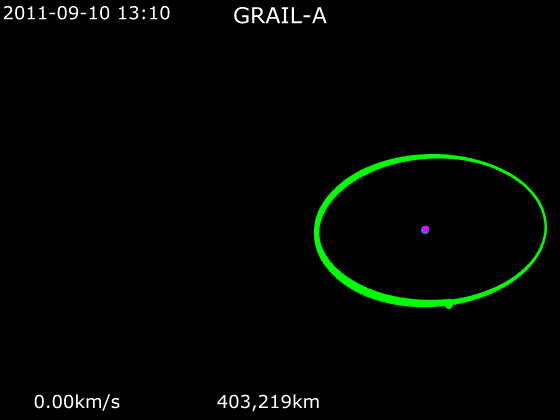
Both of these examples involve using solar gravity. This can be for short periods of time (months). It can also stretch to decades or centuries.
I could give many other examples, but for now let's move on. The full diagram is below.
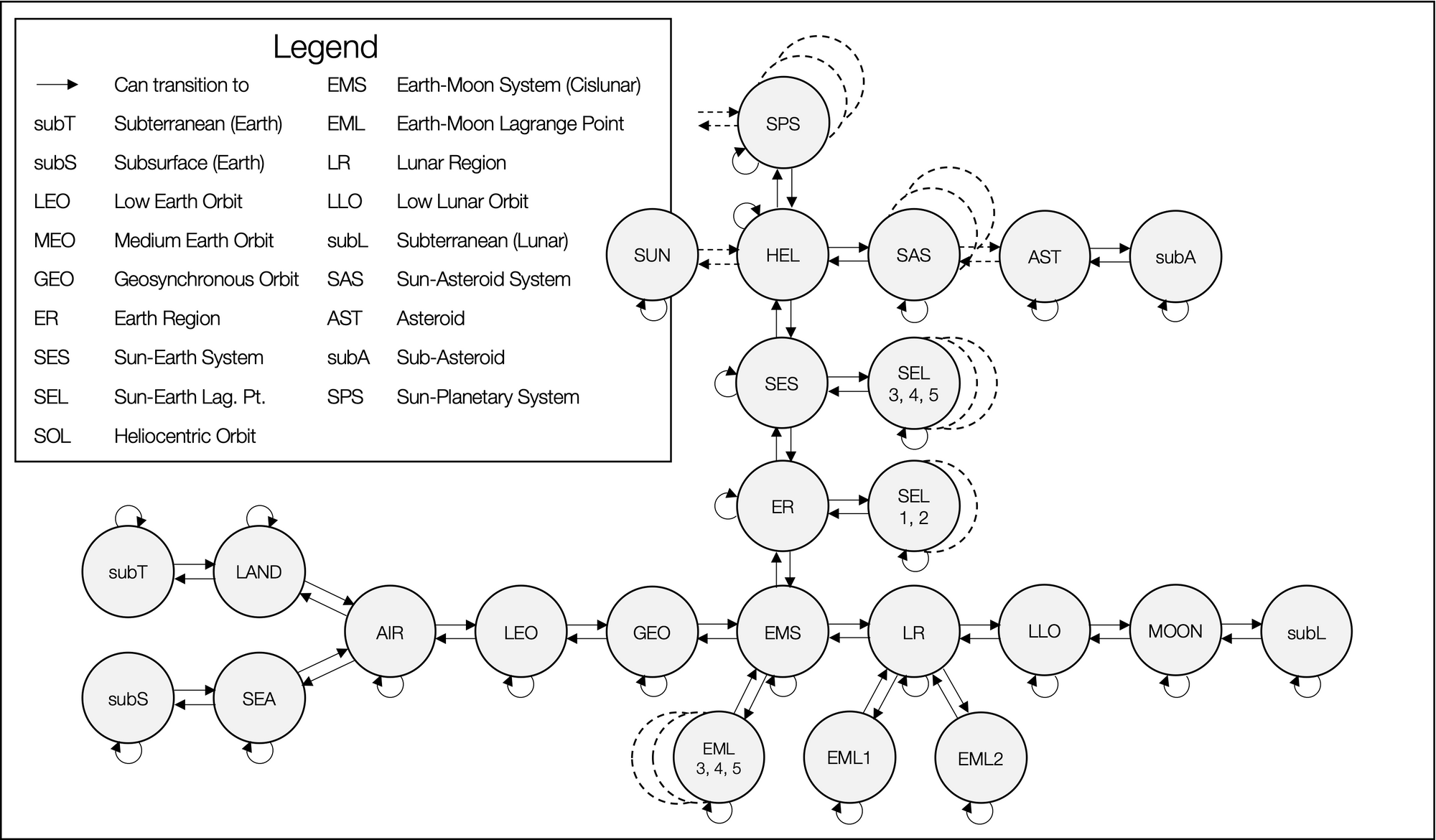
As we travel further from the EMS, we are eventually in a dynamics regime where motion is determined largely by the Sun and Earth - the Sun-Earth System (SES). This region includes another set of Sun-Earth Lagrange Points (SEL 1-5). Note, the James Webb Space Telescope is in a repeating trajectory near SEL 2.
Traveling even further, we are finally in heliocentric space - space governed principally by the Sun's gravity. Our solar system is populated by 8 planetary bodies, many dwarf planets, and millions of asteroids. Here I've simply divided them into planetary systems (planets or dwarf planets, perhaps with their own moons) on the left (Sun-Planetary Systems - SPS), and asteroids on the right (Sun-Asteroid System - SAS).
I don't go into detail on the individual planets. Those state transition models would resemble the Earth model, but would vary greatly depending upon the number of natural satellites (moons) and masses. Of course, we could develop models for each SPS if desired. I've used dotted lines here to indicate these differences.
I've treated asteroids with a similar level of abstraction - there are millions of them. A large fraction of asteroids are actually in a binary relationship with another asteroid. I've waved away these real distinctions; they are secondary to a more abstracted model in which I can group all Sun-Asteroid Systems.
Factoring out some detail in SASs (like number of asteroids, synchronous and low orbits; again note the dotted lines), we eventually reach the asteroid surface itself (AST) and subterranean asteroid locations (subA).
A Note on the Solar State Transition Model
The updated state transition model above may appear complicated, however it is deceptively simple. In it, regions of space are idealized as nodes. Not only are these regions volumes of space, but they are unimaginably vast. Further, this graph represents positional adjacency to capture what nodes interactions must pass through.
This is not a dynamics model. Individual trajectories or transfers are not separate nodes. We're not accounting for velocities, energy (kinetic or potential), momentum, or any other of the fun aspects of astrodynamics. We're not accounting for perturbations from solar radiation pressure, thermal re-radiation, or outgassing. We're not capturing how long or how much fuel is required to transition from one node to another.
However, the positional relationships described are accurate. To transition from the Earth to the Lunar surface, we must pass across all of the nodes identified. We're certainly free to pass through more nodes than direct transfers require if we use more exotic trajectories.
Let's see if we can't digest what the model means or how it can be used.
3) Of Diagrams and Destiny
"From where to where?" and to what end?
I've no hope of summarizing all answers to that question for the updated state transition diagram given above. The combinations are... combinatorial.
Such an extended discussion is necessary, however. It is a discussion that can generate a variety of tactical, operational, strategic, and doctrinal observations.
Multi-Domain Operations
I will observe that the diagram encompasses all physical domains - Land, Sea, Air, and Space (it's missing Cyber). Focusing for a moment on national military spacepower, a diagram like this is critical for understanding Multi-Domain Operations (MDOs).
Recently, Peter Garretson wrote an article Reaching For the Stars - Cultivating a Cadre of Space Specialists in the Air Force for Multi-Domain Operations. In it he articulated a great need for specialists in all domains to understand how they might interact with other domains.
"Space specialists that understand adjacent domains and their interaction and who can translate these effects into their domain are, therefore, imperative in executing MDO." (Reaching For the Stars - Cultivating a Cadre of Space Specialists in the Air Force for Multi-Domain Operations)
One particular advantage generated from this type of lateral thinking is:
"To think cross-domain is to put asymmetry and adjacency at the forefront of the planning discipline. It is to begin by asking the question of how adjacent domains affect the military objective, the main thrust of operations, and one’s own centers of power and critical enablers." (Reaching For the Stars - Cultivating a Cadre of Space Specialists in the Air Force for Multi-Domain Operations)
National Economic, Diplomatic, and Information Spacepower
It is a small hop to expand the discussion on national military spacepower to other instruments of national power - economic, diplomatic, and information.
Again, the topic is too large to handle with any dignity in a short article. For now, I'll simply stomp my foot and emphasize that the state transition diagram above is applicable to conceptualizing, planning, and exercising national economic, diplomatic, and information spacepower.
For all instruments of national spacepower, I leave it to the intrepid reader to use the state transition diagram to ask and answer these timely and impactful questions.
Summary
I've drawn the following conclusions from this discussion.
- Mantz' State Transition Diagram gave an excellent tool to conceptualize possible interactions across domains, particularly those involving the space domain. It's detail in cislunar operations was light, motivating an expanded model
- An Expanded Lunar and Solar State Transition Diagram is introduced and justified. Several representation decisions are made in the name of simplicity. It is emphasized that the model captures position, not dynamics.
- Multi-Domain Operations and All Instruments of National Power Benefit from models such as the solar state transition model introduced in this article. It is useful for conceptualization, planning, and execution of MDO activities. It is useful for all instruments of national power.
Subscribe to the Newsletter
If you enjoy this content, show your support by subscribing to the free weekly newsletter, which includes the weekly articles as well as additional comments from me. There are great reasons to do so, and subscriptions give me motivation to continue writing these articles! Subscribe today!


